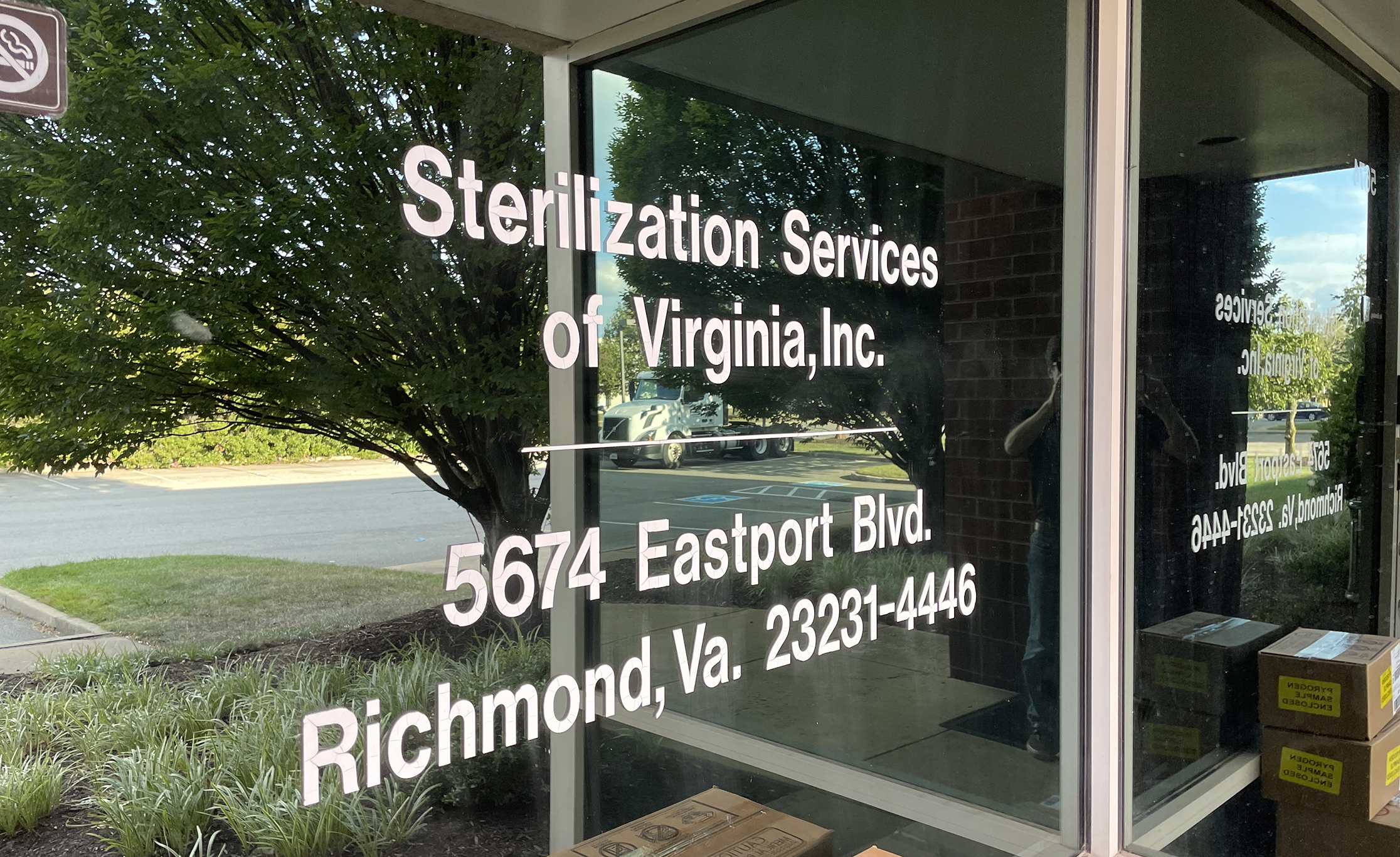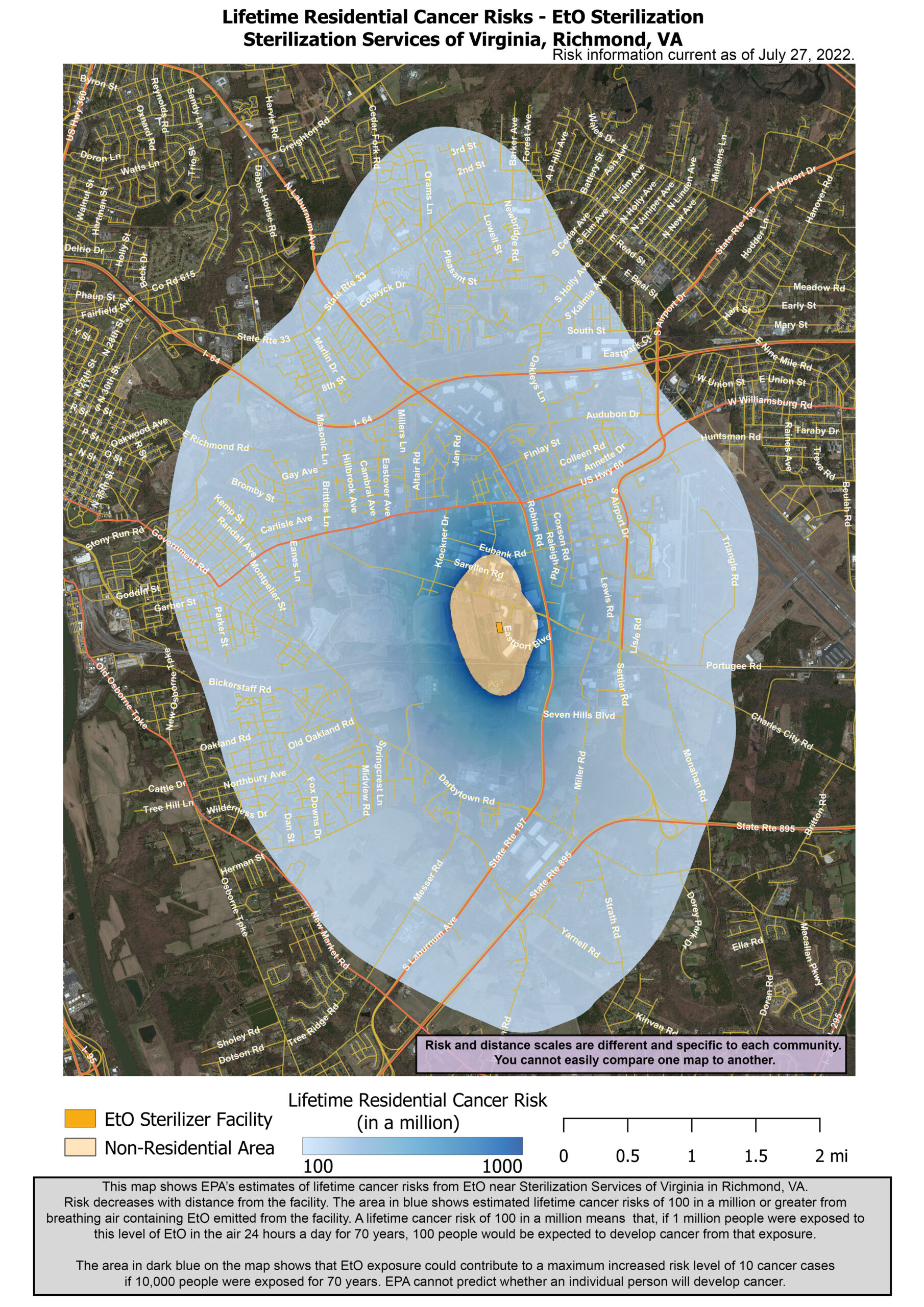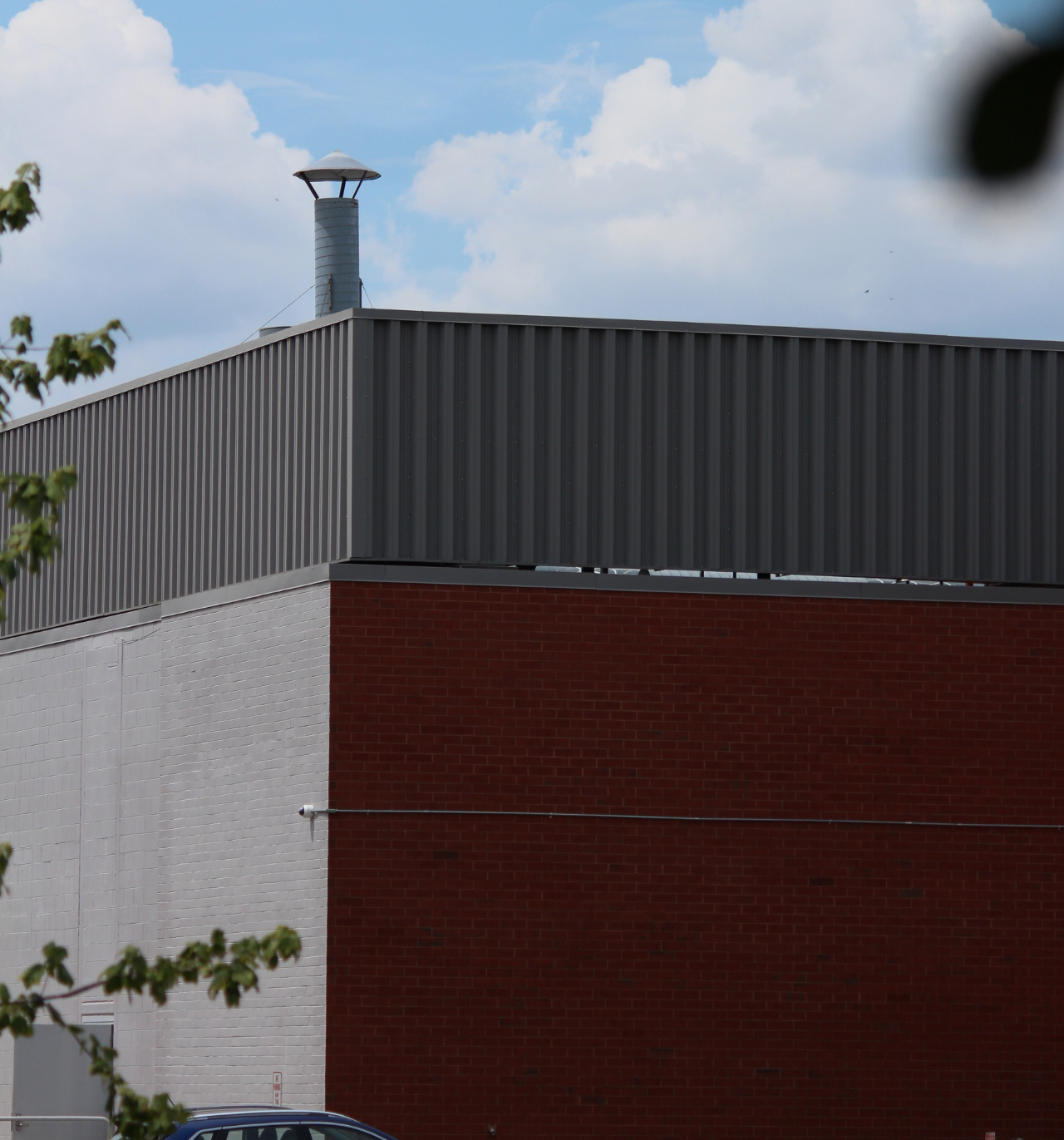
Sterilization Services of Virginia is based in an industrial park off Charles City Road. (BizSense file photo)
A medical supply firm’s Henrico outpost has been named to a list of commercial sterilizing facilities nationwide that are currently facing scrutiny from the Environmental Protection Agency.
Sterilization Services of Virginia’s location at Eastport Industrial Park is one of 23 such sites that decontaminate medical instruments using ethylene oxide, while also emitting the chemical as an air pollutant at rates found to be hazardous in the long term for the surrounding community, according to an EPA list released this month.
The list includes plants in places like Puerto Rico, New Jersey and Texas and was announced on Aug. 3, following a risk assessment of nearly 100 such facilities across the country.
While emphasizing that the Henrico facility at 5674 Eastport Blvd. and others on the list do not pose any threat in the short term, the EPA has released additional information on its website, such as maps and timelines for local forums discussing potential longer-term risks. It’s part of an effort to inform the public about the issue, prompted by reporting from ProPublica and The Texas Tribune, as well as the EPA’s own Office of Inspector General.
Ethylene oxide, or EtO, increases the risk of breast and lymph cancer for those inhaling it over a lifetime period, the EPA said at a virtual forum hosted on Aug. 10.
For community members exposed to the gas 24 hours a day for 70 years, at least 1 in 10,000 will develop cancer during their lifetime. The risk increases to a rate of 1 in 1,000 the closer one lives to the facility. However, these numbers do not account for other cancer-causing factors in the area.
ProPublica, which has been tracking the emission rates from these facilities over five years using EPA data, found that the average lifetime cancer risk around the Sterilization Services Eastport plant is 1 in 1,800. This is over five times greater than the EPA’s acceptable risk level of 1 in 10,000.
Per ProPublica reporting, a 2016 EPA study found EtO to be 30 times more cancer-causing than previously thought, increasing to 50 times more for those exposed at birth. During the recent presentation, EPA staff reiterated that children and infants are at greater risk and acknowledged a heightened danger for workers in the facilities.

The EPA has provided informational resources about the listed facilities on its website, such as this map of Sterilization Services of Virginia’s EtO emissions. (Courtesy of the EPA)
It’s the chemical’s DNA-altering characteristic that makes it dangerous, ProPublica reported.
Specific to the Henrico site, an EPA graphic visualizing the spread of emissions shows a pollution radius of over 2 miles from Sterilization Services’ facility. According to EPA-provided information, there are 32,105 people residing within a 3-mile radius of the Henrico facility. Of those, 8,472 are under the age of 17.
Sterilization Services of Virginia declined to comment.
EtO is a commonly applied sterilizer in the health care industry, given its low cost and easy application as a gas, according to Sterilization Service’s own website. According to the EPA’s website, the chemical is oftentimes the only method available for some instruments in need of sanitation.
Once the sanitization is complete, untreated EtO is released into the atmosphere. It’s the amount that the 23 facilities have been releasing that’s drawn the attention of the EPA. However, despite elevating cancer risks above the EPA’s acceptable levels long term, the current emission levels of Sterilization Services are within the agency’s regulations.
A look at Sterilization Service’s three-year compliance history shows that it has had no EPA violations in that timeframe.
Meanwhile, a February VPM article noted that in 2020, the state’s Department of Environmental Quality permitted the facility to emit 4.3 tons of EtO per year.
In 2021, Sterilization Services released 5,025 pounds of the pollutant, though these numbers are self-reported. Visualized on a map the EPA released, estimates show that EtO emissions from the facility reach from the Richmond International Airport to Church Hill.
Though the EPA has no forthcoming plans to begin monitoring the facilities on the list, staff said that the most effective way to deal with the issue is to reduce the amount of EtO that plants are allowed to release. They said that this is something that takes time.

In 2021, Sterilization Services of Virginia’s Henrico plant emitted 5,025 pounds of the pollutant. It is permitted to emit 4.3 tons per year. (BizSense file photo)
In pursuit of the goal, the EPA is already reviewing the Clean Air Act and announced plans to propose new regulations later this year. This would be followed by a public commenting period and potential legislation in 2023.
Other proposals are also anticipated. This includes the expansion of Toxics Release Inventory reporting to facilities that currently do not have to share emissions data, as well as requiring further measures to protect sterilization workers.
Currently, the agency plans to hold a community outreach meeting for Henrico sometime in October or November and invites interested parties to sign up through its website.
It’s also working to encourage the listed facilities to reduce their emissions prior to any legislative pressure, involving state agencies, such as Virginia DEQ.
One example given during the webinar was the recent installation of a pollution control system in Erie, Pennsylvania.
According to the agency’s website, Sterilization Services of Virginia has installed a new wet scrubber, a machine that absorbs EtO and converts it to ethylene glycol. This adds on to a previous scrubber and catalytic oxidizer already in use by the facility.
Meanwhile, DEQ is said to be collaborating with the plant to consider adding more EtO controls, according to the EPA’s website.
Sterilization Services has other such facilities in Tennessee and Georgia, according to its website. The Tennessee center is also on the EPA list, while the Georgia location has been fined for failing to install an EtO-reducing system on time in 2020, according to a consent order filed by the state’s Environmental Protection Division.
EPA filings show that Altair Corp. is the parent company of Sterilization Services of Virginia.

Sterilization Services of Virginia is based in an industrial park off Charles City Road. (BizSense file photo)
A medical supply firm’s Henrico outpost has been named to a list of commercial sterilizing facilities nationwide that are currently facing scrutiny from the Environmental Protection Agency.
Sterilization Services of Virginia’s location at Eastport Industrial Park is one of 23 such sites that decontaminate medical instruments using ethylene oxide, while also emitting the chemical as an air pollutant at rates found to be hazardous in the long term for the surrounding community, according to an EPA list released this month.
The list includes plants in places like Puerto Rico, New Jersey and Texas and was announced on Aug. 3, following a risk assessment of nearly 100 such facilities across the country.
While emphasizing that the Henrico facility at 5674 Eastport Blvd. and others on the list do not pose any threat in the short term, the EPA has released additional information on its website, such as maps and timelines for local forums discussing potential longer-term risks. It’s part of an effort to inform the public about the issue, prompted by reporting from ProPublica and The Texas Tribune, as well as the EPA’s own Office of Inspector General.
Ethylene oxide, or EtO, increases the risk of breast and lymph cancer for those inhaling it over a lifetime period, the EPA said at a virtual forum hosted on Aug. 10.
For community members exposed to the gas 24 hours a day for 70 years, at least 1 in 10,000 will develop cancer during their lifetime. The risk increases to a rate of 1 in 1,000 the closer one lives to the facility. However, these numbers do not account for other cancer-causing factors in the area.
ProPublica, which has been tracking the emission rates from these facilities over five years using EPA data, found that the average lifetime cancer risk around the Sterilization Services Eastport plant is 1 in 1,800. This is over five times greater than the EPA’s acceptable risk level of 1 in 10,000.
Per ProPublica reporting, a 2016 EPA study found EtO to be 30 times more cancer-causing than previously thought, increasing to 50 times more for those exposed at birth. During the recent presentation, EPA staff reiterated that children and infants are at greater risk and acknowledged a heightened danger for workers in the facilities.

The EPA has provided informational resources about the listed facilities on its website, such as this map of Sterilization Services of Virginia’s EtO emissions. (Courtesy of the EPA)
It’s the chemical’s DNA-altering characteristic that makes it dangerous, ProPublica reported.
Specific to the Henrico site, an EPA graphic visualizing the spread of emissions shows a pollution radius of over 2 miles from Sterilization Services’ facility. According to EPA-provided information, there are 32,105 people residing within a 3-mile radius of the Henrico facility. Of those, 8,472 are under the age of 17.
Sterilization Services of Virginia declined to comment.
EtO is a commonly applied sterilizer in the health care industry, given its low cost and easy application as a gas, according to Sterilization Service’s own website. According to the EPA’s website, the chemical is oftentimes the only method available for some instruments in need of sanitation.
Once the sanitization is complete, untreated EtO is released into the atmosphere. It’s the amount that the 23 facilities have been releasing that’s drawn the attention of the EPA. However, despite elevating cancer risks above the EPA’s acceptable levels long term, the current emission levels of Sterilization Services are within the agency’s regulations.
A look at Sterilization Service’s three-year compliance history shows that it has had no EPA violations in that timeframe.
Meanwhile, a February VPM article noted that in 2020, the state’s Department of Environmental Quality permitted the facility to emit 4.3 tons of EtO per year.
In 2021, Sterilization Services released 5,025 pounds of the pollutant, though these numbers are self-reported. Visualized on a map the EPA released, estimates show that EtO emissions from the facility reach from the Richmond International Airport to Church Hill.
Though the EPA has no forthcoming plans to begin monitoring the facilities on the list, staff said that the most effective way to deal with the issue is to reduce the amount of EtO that plants are allowed to release. They said that this is something that takes time.

In 2021, Sterilization Services of Virginia’s Henrico plant emitted 5,025 pounds of the pollutant. It is permitted to emit 4.3 tons per year. (BizSense file photo)
In pursuit of the goal, the EPA is already reviewing the Clean Air Act and announced plans to propose new regulations later this year. This would be followed by a public commenting period and potential legislation in 2023.
Other proposals are also anticipated. This includes the expansion of Toxics Release Inventory reporting to facilities that currently do not have to share emissions data, as well as requiring further measures to protect sterilization workers.
Currently, the agency plans to hold a community outreach meeting for Henrico sometime in October or November and invites interested parties to sign up through its website.
It’s also working to encourage the listed facilities to reduce their emissions prior to any legislative pressure, involving state agencies, such as Virginia DEQ.
One example given during the webinar was the recent installation of a pollution control system in Erie, Pennsylvania.
According to the agency’s website, Sterilization Services of Virginia has installed a new wet scrubber, a machine that absorbs EtO and converts it to ethylene glycol. This adds on to a previous scrubber and catalytic oxidizer already in use by the facility.
Meanwhile, DEQ is said to be collaborating with the plant to consider adding more EtO controls, according to the EPA’s website.
Sterilization Services has other such facilities in Tennessee and Georgia, according to its website. The Tennessee center is also on the EPA list, while the Georgia location has been fined for failing to install an EtO-reducing system on time in 2020, according to a consent order filed by the state’s Environmental Protection Division.
EPA filings show that Altair Corp. is the parent company of Sterilization Services of Virginia.


